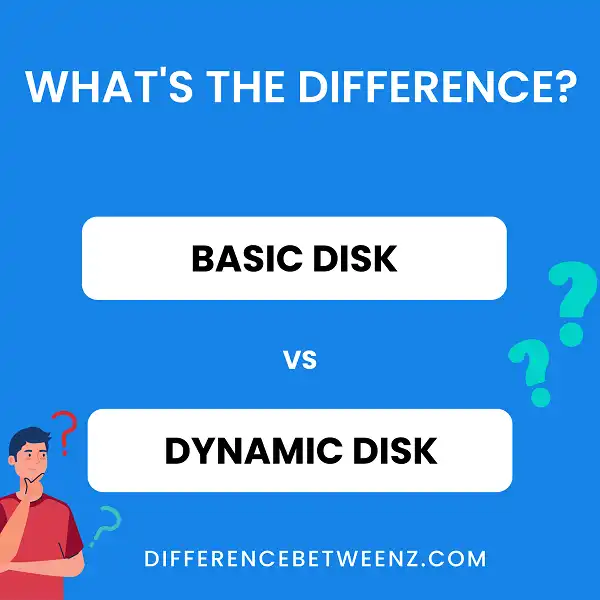If you’ve ever had to grapple with storage issues on your computer, you likely know that there are two kinds of disks – basic and dynamic. But what is the difference between them? It can be a tricky question to answer given the complexity of both. In this post, we’ll delve into their differences in detail, so that you have a better understanding of which type of disk will best meet your needs. We’ll also explain how their respective features impact performance and reliability when using either option for data storage purposes. Read on to learn more!
What is Basic Disk?
- A basic Disk is a traditional and basic type of storage device that is broken down into partitions, each of which can then be further divided into primary or extended partitions.
- Basic disks use what is known as the master boot record (MBR) partitioning scheme to organize and manage data on a hard drive. Basic disks support not only Windows and other operating system files, but also applications, user data, and other informational resources.
- Basic disks are still heavily used today in many different types of computers despite the availability of later storage technologies such as solid-state drives. Basic disks remain applicable for use due to their low cost, extensive capacity, and relative ease of use when compared to newer storage technologies.
What is a Dynamic Disk?
- A Dynamic Disk is a type of disk used in a computer that uses a feature known as “dynamic volume management” to create more flexibility in file system management. This advanced feature allows a user to assign multiple unused drives into a single, large drive.
- It can also be utilized to break one large logical drive into multiple smaller partitions that can be assigned a unique set of attributes. The ability to manage a hard drive like this makes dynamic disks an ideal choice for intensive applications that require a great deal of customization and reliability.
- Additionally, the only disadvantage to utilizing a dynamic disk is its compatibility issues, as it is not supported by all operating systems. Still, it has proven to be an invaluable tool for many users due to how easily data can be managed within it.
Difference Between Basic Disk and Dynamic Disk
A Basic Disk and a Dynamic Disk are two types of disks used to store data by different operating systems.
Basic Disks use the older MBR (Master Boot Record) partition structure, while Dynamic Disks can take advantage of newer GUI and LDM (Logical Disk Managers) technologies. Basic Disks are compatible with most operating systems including Windows, Linux, and macOS, while Dynamic Disks can experience compatibility issues with non-Windows operating systems. One major disadvantage to Basic Disks is that they have a limited ability to create partitions of more than 2 TB in size, while Dynamic Disks have no such limitations. Furthermore, data stored on Basic Disks is less secure as the formatting needs to be overwritten completely in order to erase it whereas data stored on a Dynamic Disk can be securely wiped by simply deleting it from the LDM configuration.
Conclusion
There are two main types of disks that can be used with Windows: basic and dynamic. Basic disks are the oldest and most compatible type, while dynamic disks offer several advantages over basic disks. Understanding the difference between these two types of disks is important for anyone using or considering using Windows. We hope this article has helped you to understand the basics of each kind of disk and how they work. Thanks for reading!


